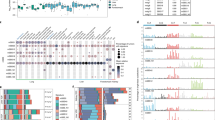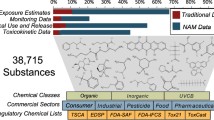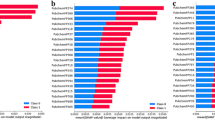Abstract
A number of tests have been described which are thought to be capable of identifying carcinogens without using the actual induction of cancer as an endpoint. This study compared the performance of 6 such tests on a selection of 120 organic chemicals. The tests studies were: (1) mutation of Salmonella typhimurium, (2) cell transformation, (3) degranulation of endoplasmic reticulum, (4) sebaceous gland suppression, (5) tetrazolium reduction and (6) subcutaneous implant. A further 4 tests were examined briefly, but were not included in the complete evaluation. The chemicals were classified into carcinogens (58) and non-carcinogens (62) on the basis of published experimental data, and into 1 of 4 broad chemical classes. There was considerable variation between tests in their ability to predict carcinogenicity, with the cell-transformation test and the bacterial-mutation test being the most accurate (94% and 93% accurate respectively). These 2 tests were considered to be of general use in screening, since they were clearly more accurate than the others. Statistical consideration of various combinations of these tests showed that the use of cell transformation and bacterial mutation together, provide an advantage over the use of either test alone. The inclusion of the other 4 tests in a screening battery predictably resulted in a great increase in overall inaccuracy and loss of discrimination, even though the detection of carcinogens is improved. All the tests were shown to generate both false positive and false negative results, a situation which may be controlled by the use, where possible, of appropriate chemical-class controls, to identify the test which is optimal for the class of chemical under test. Structural analogy may have a part to play in the rapid detection of environmental carcinogens, and some general guidelines for its use are given.
This is a preview of subscription content, access via your institution
Access options
Subscribe to this journal
Receive 24 print issues and online access
$259.00 per year
only $10.79 per issue
Buy this article
- Purchase on Springer Link
- Instant access to full article PDF
Prices may be subject to local taxes which are calculated during checkout
Similar content being viewed by others
Rights and permissions
About this article
Cite this article
Purchase, I., Longstaff, E., Ashby, J. et al. An evaluation of 6 short-term tests for detecting organic chemical carcinogens. Br J Cancer 37, 873–903 (1978). https://doi.org/10.1038/bjc.1978.132
Issue Date:
DOI: https://doi.org/10.1038/bjc.1978.132
This article is cited by
-
Determination of Dicyclohexylamine and Fumagillin in Honey by LC-MS/MS
Food Analytical Methods (2015)
-
Assessment of planctomycetes cell viability after pollutants exposure
Antonie van Leeuwenhoek (2014)
-
Mouse models for induced genetic instability at endogenous loci
Oncogene (2003)
-
An evaluation of three pesticides: Piritione, supercypermethrin and metolachlor in transformation bioassays of BHK21 and hamster embryo cells
Cell Biology and Toxicology (1992)



